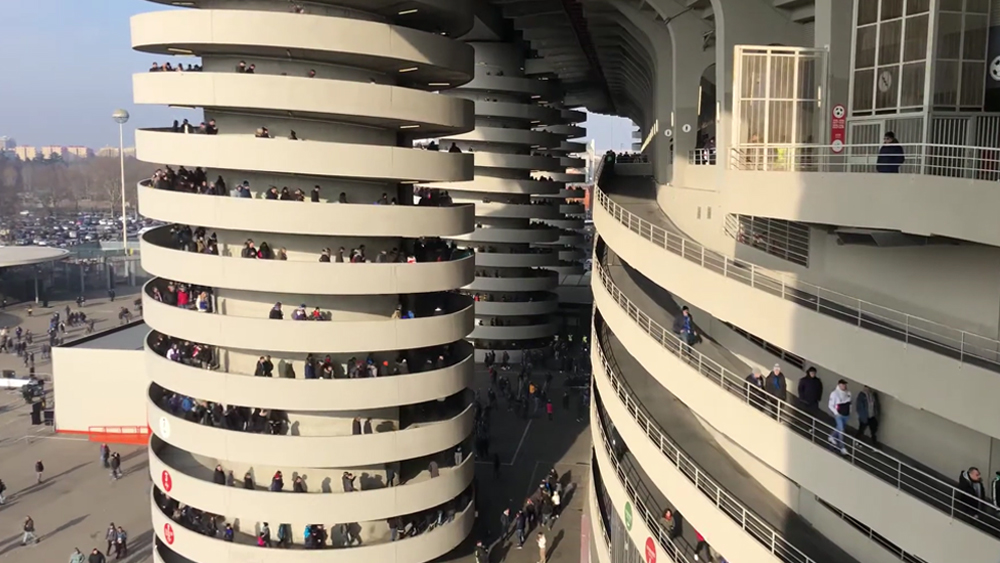
"In the late '80s, ahead of Italy hosting the World Cup in 1990, architects Giancarlo Ragazzi and Enrico Hoffer developed an extension to San Siro Stadium, adding a third ring on eleven helical walkways."
"When a large number of people are walking in the same direction on the towers, our brains see the flow of people as the main visual signal, interpreting the towers as if they were rotating."
"The optical illusion was likely unintentional, yet it shows that architects must consider the visual impact of their designs to enhance the experience."
"I suspect the effect is enhanced because the walls cover fans legs, so we can't see that they're walking, making it look like they could be standing on moving floors."
The San Siro (Giuseppe Meazza) Stadium in Milan features unique optical illusions due to its architectural design. The helical walkways created for access give the illusion of rotation when large crowds walk in unison. This phenomenon captivates fans and suggests a deeper consideration of visual perceptions in architectural designs. Although it seems unintentional, it enhances the spectator experience, sparking curiosity about the relationship between architecture and illusion. Architects can enhance engagement through thoughtful design that considers how spaces are perceived, even if unintended.
Read at Creative Bloq
Unable to calculate read time
Collection
[
|
...
]